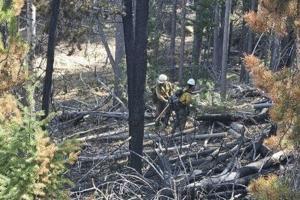Sussex hotspots for the invasive plant species Japanese Knotweed have been revealed in data from Environet. The species have their prime time for growing during the spring and summer, so Environet has analysed the latest data from its live online tracker to reveal the current hotspots. The plant is responsible for damaging homes, pavements and drains and can spread up to seven metres horizontally, so is a problem you don't want to be dealing with on your property.
The data from Environet is generated from more than 57,000 known infestations, with new sightings added daily. You can view the full interactive map here . Where are Sussex's Japanese Knotweed hotspots? According to Environet, the worst place in Sussex for Japanese Knotweed cases is around Hastings, which has 68 cases within a 4km radius.

Brighton is not too far behind with 54 occurrences of the plant nearby. Japanese Knotweed sightings are spread out around Sussex (Image: Environet) Crowborough has 45, with Bexhill-on-Sea having 39. Other hotspots include East Grinstead, where the area has 25 within a 4km radius, and Haywards Heath with 21.
How to spot Japanese Knotweed Japanese Knotweed hibernates over winter but in March or April, it begins to grow, with red or purple spear-like shoots emerging from the ground which quickly grow into lush green shrubs with pink-flecked stems and bamboo-like canes. The roots can grow as deep as three metres and spread up to seven metres horizontally. Recommended reading: Why Japanese Knotweed is bad and how to get rid of it Garden plants that could increase the value of your home by thousands Have you found rats in your house or garden? What to do if you see rodents What to do if you have Japanese Knotweed The first step to tackling the plant is to commission a professional Japanese Knotweed survey and find out the extent of the infestation.
They will be able to tell you where it originated and the best way to tackle it. Professional treatment should then be organised which usually involves the use of herbicide for the excavation of the infestation. If you’re buying a property and you want to be sure it’s clear of knotweed, particularly if it’s located in or near a hotspot, arrange a detection survey.
.
Health

Sussex's most prolific Japanese Knotweed hotspots are revealed

Japanese Knotweed sightings around Sussex are recorded by Environet, with larger areas like Hastings and Brighton being among the hotspots.















